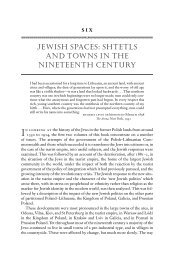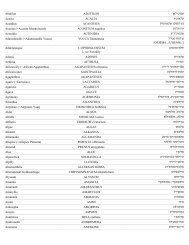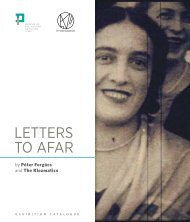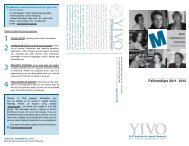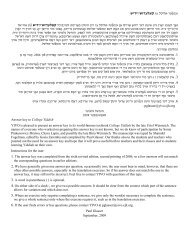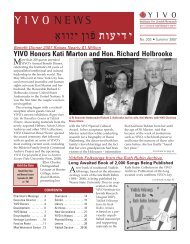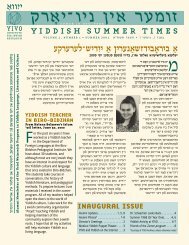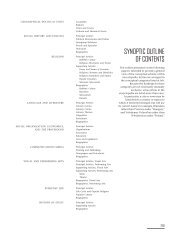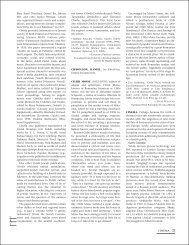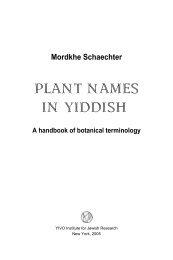geographical–political units - YIVO Institute for Jewish Research
geographical–political units - YIVO Institute for Jewish Research
geographical–political units - YIVO Institute for Jewish Research
Create successful ePaper yourself
Turn your PDF publications into a flip-book with our unique Google optimized e-Paper software.
Yiddish literature<br />
Cultural Ferment and Literary Dynamism: 1905 to the Early 1920s<br />
The years between 1905 and 1914 were a time of unprecedented growth and development<br />
in Yiddish literature. The decline of political activity after the defeat of the 1905–1907<br />
revolution in Russia led political movements, socialist and Zionist alike, to pay more<br />
attention to culture and education in Yiddish and Hebrew. The limited liberalization in<br />
Russian political life opened new venues <strong>for</strong> Yiddish creativity, particularly in the press<br />
and the theater. Yiddishists, Hebraists, and assimilationists of various shades offered<br />
competing visions of <strong>Jewish</strong> future. The Czernowitz Conference of 1908 gave a boost to<br />
the Yiddishist movement and drafted guidelines <strong>for</strong> a modernization of Yiddish culture.<br />
At the same time, emigration, often as a result of direct involvement in revolutionary<br />
politics, drained Eastern Europe of young talents who later flourished in America or<br />
Palestine.<br />
Warsaw, the largest <strong>Jewish</strong> city in Europe, became the major center of Yiddish cultural<br />
production, with numerous periodicals, publishing houses, and theater companies.<br />
From the 1890s on, literary life revolved around Y. L. Peretz, whose magisterial presence<br />
attracted young talent not only from Congress Poland but also from the whole Pale of<br />
<strong>Jewish</strong> Settlement. By 1910, his authority was challenged by the more traditionalist poet<br />
and essayist Hillel Zeitlin. In Vilna, the leading literary journals Literarishe monatshriftn<br />
and Yudishe velt, as well as the Yiddish publisher Boris Kletskin, established themselves<br />
and were dedicated to publishing quality contemporary literature. Little appreciated<br />
in those days, but important <strong>for</strong> the future development of Yiddish culture, was the<br />
emergence of Kiev as a new center of Yiddish creativity. In that city’s <strong>Jewish</strong> suburbs,<br />
budding prose writers, poets, and critics designed ways of shaping Yiddish culture<br />
along the lines of the modernist concepts of European high culture (writers included<br />
Dovid Bergelson, Borekh Glazman, and Pinkhes Kahanovitsh [Der Nister]; poets were<br />
Dovid Hofshteyn, Osher Shvartsman, and Arn Kushnirov; critics were Nakhmen Mayzel,<br />
Yekhezkl Dobrushin, Nokhem Oyslender, and Moyshe Litvakov). In eastern Galicia, the<br />
young neoromantic poets (Shmuel Yankev Imber, Melech Ravitch, Dovid Kenigsberg,<br />
and Uri Tsevi Grinberg) drew inspiration both from traditional <strong>Jewish</strong> sources and from<br />
the cultures of the Habsburg Empire.<br />
The classical writers reached their peak in popularity between 1905 and 1914, while<br />
7



